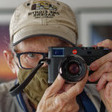What happens to your images when they leave the camera?
-
Recently Browsing 0 members
- No registered users viewing this page.
-
Similar Content
-
- 31 replies
- 1,768 views
-
- 220 replies
- 57,085 views
-
- 11 replies
- 502 views
-
- 13 replies
- 767 views
-
- 4,544 replies
- 381,047 views
-



Recommended Posts
Join the conversation
You can post now and register later. If you have an account, sign in now to post with your account.
Note: Your post will require moderator approval before it will be visible.